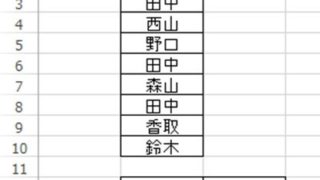スポンサーリンク
|
1 2 3 4 5 6 7 8 9 10 11 12 13 14 15 16 17 18 19 20 21 22 23 24 25 26 27 28 29 30 31 32 33 34 35 36 37 38 39 40 41 42 43 44 45 46 47 48 49 50 51 52 53 54 55 56 57 58 59 60 61 62 63 64 65 66 67 68 69 70 71 72 73 74 75 76 77 78 79 80 81 82 83 84 85 86 87 88 89 90 91 92 93 94 95 96 97 98 99 100 101 102 103 104 105 106 107 108 109 110 111 112 113 114 115 116 117 118 119 120 121 122 123 124 125 126 127 128 129 130 131 132 133 134 135 136 137 138 139 140 141 142 143 144 145 146 147 148 149 150 151 152 153 154 155 156 157 158 159 160 161 162 163 164 165 166 167 168 169 170 171 172 173 174 175 176 177 178 179 180 181 182 183 184 185 186 187 188 189 190 191 192 193 194 195 196 197 198 199 200 201 202 203 204 205 206 207 208 209 210 211 212 213 214 215 216 217 218 219 220 221 222 223 224 225 226 227 228 229 230 231 232 233 234 235 236 237 238 239 240 241 242 243 244 245 246 247 248 249 250 251 252 253 254 255 256 257 258 259 260 261 262 263 264 265 266 267 268 269 270 271 272 273 274 275 276 277 278 279 280 281 282 283 284 285 286 287 288 289 290 291 292 293 294 295 296 297 298 299 300 301 302 303 304 305 306 307 308 309 310 311 312 313 314 315 316 317 318 319 320 321 322 323 324 325 326 327 328 329 330 331 332 333 334 335 336 337 338 339 340 341 342 343 344 345 346 347 348 349 350 351 352 353 354 355 356 357 358 359 360 361 362 363 364 365 366 367 368 369 370 371 372 373 374 375 376 377 378 379 380 381 382 383 384 385 386 387 388 389 390 391 392 393 394 395 396 397 398 399 400 401 402 403 404 405 406 407 408 409 410 411 412 413 414 415 416 417 418 419 420 421 422 423 424 425 426 427 428 429 430 431 432 433 434 435 436 437 438 439 440 441 442 443 444 445 446 447 448 449 450 451 452 453 454 455 456 457 458 459 460 461 462 463 464 465 466 467 468 469 470 471 472 473 474 475 476 477 478 479 480 481 482 483 484 485 486 487 488 489 490 491 492 493 494 495 496 497 498 499 500 501 502 503 504 505 506 507 508 509 510 511 512 513 514 515 516 517 518 519 520 521 522 523 524 525 526 527 528 529 530 531 532 533 534 535 536 537 538 539 540 541 542 543 544 545 546 547 548 549 550 551 552 553 554 555 556 557 558 559 560 561 562 563 564 565 566 567 568 569 570 571 572 573 574 575 576 577 578 579 580 581 582 583 584 585 586 587 588 589 590 591 592 593 594 595 596 597 598 599 600 601 602 603 604 605 606 607 608 609 610 611 612 613 614 615 616 617 618 619 620 621 622 623 624 625 626 627 628 629 630 631 632 633 634 635 636 637 638 639 640 641 642 643 644 645 646 647 648 649 650 651 652 653 654 655 656 657 658 659 660 661 662 663 664 665 666 667 668 669 670 671 672 673 674 675 676 677 678 679 680 681 682 683 684 685 686 687 688 689 690 691 692 693 694 695 696 697 698 699 700 701 702 703 704 705 706 707 708 709 710 711 712 713 714 715 716 717 718 719 720 721 722 723 724 725 726 727 728 729 730 731 732 733 734 735 736 737 738 739 740 741 742 743 744 745 746 747 748 749 750 751 752 753 754 755 756 757 758 759 760 761 762 763 764 765 766 767 768 769 770 771 772 773 774 775 776 777 778 779 780 781 782 783 784 785 786 787 788 789 790 791 792 793 794 795 796 797 798 799 800 801 802 803 804 805 806 807 808 809 810 |
開始 @echo off SET script_path=C:\path\to\your\script.py REM Start the Python script start python %script_path% 終了 @echo off SET script_name=script.py SET python_exe=python.exe REM Check if the Python script is running and kill it for /f "tokens=1,2*" %%i in ('tasklist ^| findstr /i %python_exe%') do ( echo %%k | findstr /i %script_name% > nul if errorlevel 1 ( echo Script is not running. ) else ( echo Script is running. PID is %%j. Killing it now. taskkill /PID %%j /F ) ) import numpy as np # インデックスのリストを定義 index_list = [1, 2, 4, 3] # 累積和を取得 (numpyのcumsum関数を利用) cumulative_indexes = np.cumsum(index_list) start_index = 0 for end_index in cumulative_indexes: # インデックスリストに従って処理を行う for i in range(start_index, end_index): row = input_df.iloc[i] # Pythonは0からインデクシングするので、-1を行います。 filename = row['no'] start_time = datetime.strptime(row['b'], '%Y-%m-%d %H:%M:%S') # 適切なフォーマットに変更してください end_time = datetime.strptime(row['c'], '%Y-%m-%d %H:%M:%S') # 適切なフォーマットに変更してください # 別のcsvファイルを読み込む data_df = pd.read_csv(filename) data_df['date'] = pd.to_datetime(data_df['date'], format='%Y-%m-%d %H:%M:%S') # 適切なフォーマットに変更してください data_df['hour'] = data_df['date'].dt.hour # 開始日時と終了日時内のデータを選択 selected_data = data_df[(data_df['date'] >= start_time) & (data_df['date'] <= end_time)] try: # 最初と最後のデータの差分を計算 difference = selected_data['積算'].iloc[-1] - selected_data['積算'].iloc[0] except IndexError: # 指定した行が存在しない場合にエラーを無視し、differenceを空白に設定 difference = "" # 結果をoutputのデータフレームに追加 output_df = output_df.append({'filename': filename, 'difference': difference, 'month': start_time.month}, ignore_index=True) # 時間ごとの差分の平均を計算しデータフレームに追加 average_diff = selected_data.groupby('hour')['積算'].diff().groupby(selected_data['hour']).mean().reset_index() average_diff['filename'] = filename average_diff_df = pd.concat([average_diff_df, average_diff]) # 現在の終了インデックスを次のスタートインデックスに設定 start_index = end_index from pandas.tseries.offsets import Minute # ...(省略)... # 'value'以外の列名を取得 other_columns = [col for col in df.columns if col != 'value'] # 該当月の各日時について for time in pd.date_range(start=start_time, end=end_time, freq='H'): # データが存在しない場合 if time not in df.index: # 新たなデータポイントを2つ作成(5分後と35分後に設定) new_data_dict = { 'timestamp': [time + Minute(5), time + Minute(35)], 'value': [0, 0] # ここに任意の値を設定 } # 他の列全てを0で埋める for col in other_columns: new_data_dict[col] = [0, 0] new_data = pd.DataFrame(new_data_dict) # 'timestamp'列を日時として解釈 new_data['timestamp'] = pd.to_datetime(new_data['timestamp']) # 日時をインデックスに設定 new_data = new_data.set_index('timestamp') # 元のDataFrameに新たなデータを追加 df = pd.concat([df, new_data]) # DataFrameを日時でソート df = df.sort_index() import pandas as pd import glob # 同じフォルダ内のすべてのエクセルファイルを取得 files = glob.glob('*.xlsx') # ファイルを順に読み込み、一つのデータフレームに各セルを串刺し演算 result = None for file in files: df = pd.read_excel(file) if result is None: result = df else: result += df # 結果を新しいエクセルファイルに出力 result.to_excel('output.xlsx', index=False) import pandas as pd import glob import os # 同じフォルダ内のcsvファイルを読み込む csv_files = glob.glob('*.csv') # すべてのcsvファイルを読み込んでリストに格納する dfs = [pd.read_csv(f) for f in csv_files] # すべてのDataFrameに新しい列を追加する for df in dfs: df['練習1掛け算'] = df['練習1'] * df['練習1のデータ数'] df['練習2掛け算'] = df['練習2'] * df['練習2のデータ数'] # 空のDataFrameを作成し、その後すべてのDataFrameを一つずつ足し合わせる result = pd.DataFrame(columns=['練習1のデータ数', '練習1掛け算', '練習2のデータ数', '練習2掛け算']) for df in dfs: result = result.add(df[['練習1のデータ数', '練習1掛け算', '練習2のデータ数', '練習2掛け算']], fill_value=0) # 結果をエクセルファ 串刺し演算 import pandas as pd import glob import os # 同じフォルダ内のcsvファイルを読み込む csv_files = glob.glob('*.csv') # すべてのcsvファイルを読み込んでリストに格納する dfs = [pd.read_csv(f) for f in csv_files] # すべてのDataFrameに新しい列を追加する for df in dfs: df['練習1掛け算'] = df['練習1'] * df['練習1のデータ数'] df['練習2掛け算'] = df['練習2'] * df['練習2のデータ数'] # すべてのDataFrameを要素ごとに合計する result = pd.concat(dfs).groupby(level=0).sum() # 必要な列のみを取り出す result = result[['練習1のデータ数', '練習1掛け算', '練習2のデータ数', '練習2掛け算']] # 結果をエクセルファイルに保存する result.to_excel('total_output.xlsx') import os import pandas as pd directory = '/path/to/your/directory' # フォルダのパスを指定 output_directory = '/path/to/your/output_directory' # 出力フォルダのパスを指定 # フォルダ内のCSVファイルを名前順にソート csv_files = sorted([f for f in os.listdir(directory) if f.endswith('.csv')]) # ファイル数を取得 total_files = len(csv_files) # 2000台ごとに処理を行う for i in range(0, total_files, 2000): start_index = i end_index = min(i + 2000, total_files) # ファイル数が2000未満の場合の対応 output_file_name = f'{start_index + 1}_output.xlsx' # 出力ファイル名を作成 # 出力用のデータフレームを作成 output_df = pd.DataFrame(columns=['File Name', 'B Column Total']) # ファイルを順番に処理 for j in range(start_index, end_index): file_name = csv_files[j] file_path = os.path.join(directory, file_name) df = pd.read_csv(file_path) b_column_total = df['B'].sum() output_df = output_df.append({'File Name': file_name, 'B Column Total': b_column_total}, ignore_index=True) # 結果をExcelファイルとして出力 output_file_path = os.path.join(output_directory, output_file_name) output_df.to_excel(output_file_path, index=False) print(f'Processed files {start_index + 1} to {end_index}. Output saved to {output_file_name}') from openpyxl import load_workbook # ワークブックをロード wb = load_workbook('example.xlsx') sheet = wb.active # 列の移動操作を20回繰り返す for i in range(20): for offset in range(6, -1, -2): # 6, 4, 2, 0 (start_col - target_col) start_col = 11 + i * 10 + offset target_col = 7 + i * 10 + offset # 切り取る列のデータを取得 cut_data = [(cell.value) for cell in sheet.iter_cols(min_col=start_col, max_col=start_col, values_only=True)] # 目標位置に列を挿入 sheet.insert_cols(target_col) # 挿入した列にデータをコピー for j, cell_value in enumerate(cut_data, start=1): sheet.cell(row=j, column=target_col).value = cell_value # 元の列を削除 sheet.delete_cols(start_col + 1) # we add 1 to the start_col because the spreadsheet has expanded by 1 after the insert_cols # 結果を新しいファイルに保存 wb.save('result.xlsx') from openpyxl import load_workbook # ワークブックをロード wb = load_workbook('example.xlsx') sheet = wb.active # 列と行の範囲を指定 col_offset = 5 row_range = (2, 24) # 列の処理を20回繰り返す for i in range(20): start_col = 5 + i * 6 # 2行目のセルが空白の場合、範囲を結合 if sheet.cell(row=2, column=start_col).value is None: end_col = start_col + col_offset start_cell = sheet.cell(row=row_range[0], column=start_col) end_cell = sheet.cell(row=row_range[1], column=end_col) merge_range = f'{start_cell.coordinate}:{end_cell.coordinate}' sheet.merge_cells(merge_range) # 結果を新しいファイルに保存 wb.save('result.xlsx') from openpyxl import load_workbook # ワークブックをロード wb = load_workbook('example.xlsx') sheet = wb.active # 列の移動操作を20回繰り返す for _ in range(20): for i in range(17, 11, -1): # 17列目から11列目まで逆順に for j in range(1, sheet.max_row + 1): # 全ての行に対して # セルの値を4列前のセルにコピー sheet.cell(row=j, column=i - 4).value = sheet.cell(row=j, column=i).value # 移動後のセルの値をクリア sheet.cell(row=j, column=i).value = None # 結果を新しいファイルに保存 wb.save('result.xlsx') from openpyxl import load_workbook # ワークブックをロード wb = load_workbook('example.xlsx') sheet = wb.active # 列の移動操作を20回繰り返す for i in range(20): start_col = 11 + i * 6 target_col = 7 + i * 6 # 切り取る列のデータを取得 cut_data = [(cell.value) for cell in sheet[start_col]] # 切り取った列の位置にNoneで上書き for j in range(1, sheet.max_row + 1): sheet.cell(row=j, column=start_col).value = None # 目標位置にデータを挿入 for k in range(1, sheet.max_row + 1): current_value = sheet.cell(row=k, column=target_col).value sheet.cell(row=k, column=target_col).value = cut_data[k - 1] if current_value is not None: sheet.cell(row=k, column=target_col + 1, value=current_value) # 結果を新しいファイルに保存 wb.save('result.xlsx') from openpyxl import Workbook from openpyxl.chart import BarChart, Reference # ディクショナリを作成。これにより変数名(ok1、ok2、...)とその値(りんご、ゴリラ、...)を結びつける titles = {"ok1": "りんご", "ok2": "ゴリラ", "ok3": "バナナ", "ok4": "ネズミ"} # さらに必要なだけ追加 # 新しいワークブックを作成 wb = Workbook() ws = wb.active # データを追加(ここでは単純化のため、すべてのグラフで同じデータを使用) for i in range(10): ws.append([i]) # グラフを作成し、それぞれに適切なタイトルを設定 for i in range(1, len(titles) + 1): key = "ok{}".format(i) # 動的な変数名を作成 # ディクショナリ内に該当のキーが存在するか確認 if key in titles: # データの範囲を設定 values = Reference(ws, min_col=1, min_row=1, max_col=1, max_row=10) # バーチャートを作成 chart = BarChart() chart.add_data(values) # タイトルを設定(ディクショナリからタイトルを取得) chart.title = titles[key] # グラフをシートに追加 ws.add_chart(chart, "A{}".format(20 + i * 15)) # グラフの位置を少し調整 # ファイルを保存 wb.save("bar_chart_with_dynamic_titles.xlsx") from openpyxl import Workbook from openpyxl.chart import BarChart, Reference from openpyxl.drawing.text import Paragraph, ParagraphProperties, CharacterProperties, RegularTextRun from openpyxl.drawing.text import Font, RegularTextRunProperties from openpyxl.drawing.text import BodyProperties, LatinFont, SolidFill, SchemeColor # ワークブックとシートを作成 wb = Workbook() ws = wb.active # データを追加 for i in range(10): ws.append([i]) # バーチャートを作成 chart = BarChart() values = Reference(ws, min_col=1, min_row=1, max_row=10) chart.add_data(values) # タイトルのサイズを設定 title = Paragraph() title_pPr = ParagraphProperties(defRPr=CharacterProperties(sz=1400)) # サイズを14ポイントに設定 title.append(RegularTextRun(t="My Chart Title", rPr=RegularTextRunProperties(sz=1400))) # タイトルテキストを設定 title.pPr = title_pPr chart.title = title # X軸ラベルのサイズを設定 x_label = Paragraph() x_label_pPr = ParagraphProperties(defRPr=CharacterProperties(sz=1200)) # サイズを12ポイントに設定 x_label.append(RegularTextRun(t="X-Axis Label", rPr=RegularTextRunProperties(sz=1200))) # ラベルテキストを設定 x_label.pPr = x_label_pPr chart.x_axis.title = x_label # Y軸ラベルのサイズを設定 y_label = Paragraph() y_label_pPr = ParagraphProperties(defRPr=CharacterProperties(sz=1200)) # サイズを12ポイントに設定 y_label.append(RegularTextRun(t="Y-Axis Label", rPr=RegularTextRunProperties(sz=1200))) # ラベルテキストを設定 y_label.pPr = y_label_pPr chart.y_axis.title = y_label # チャートをシートに追加 ws.add_chart(chart, "E5") # ファイルを保存 wb.save("sample_chart.xlsx") from openpyxl import Workbook from openpyxl.styles import PatternFill from openpyxl.utils import get_column_letter # ワークブックを作成 wb = Workbook() # シートを選択 ws = wb.active # 色を定義 fill = PatternFill(start_color="FFFF00", end_color="FFFF00", fill_type="solid") # 列番号を指定して5列ごとに色を塗る for i in range(1, 51): # 50列まで考慮 if i % 5 == 0: # 5で割り切れる列番号のとき column_letter = get_column_letter(i) # 列番号から列文字列を取得 for row in ws[column_letter]: # 列内の全てのセルに対して row.fill = fill # 色を塗る # ワークブックを保存 wb.save("sample.xlsx") import openpyxl # ワークブックを開く wb = openpyxl.load_workbook('your_file.xlsx') # ワークシートを選択 ws = wb['Sheet1'] # B1の値をC1にコピー ws['C1'] = ws['B1'].value # B2からB4までの合計を計算し、C2に出力 ws['C2'] = sum([ws[f'B{i}'].value for i in range(2, 5)]) # C2からC4までのセルを結合 ws.merge_cells('C2:C4') # ワークブックを保存 wb.save('your_file.xlsx') import openpyxl # ワークブックを開く wb = openpyxl.load_workbook('your_file.xlsx') # ワークシートを選択 ws = wb['Sheet1'] # ok1, ok2 を交互に記述するためのフラグ flag = True # F2から4つずつ飛ばす for i in range(6, 401, 4): # セルが空白であるかどうかを確認 if ws.cell(row=2, column=i).value == None: # 空白であれば "ok1" または "ok2" を記述 if flag: ws.cell(row=2, column=i).value = "ok1" flag = not flag else: ws.cell(row=2, column=i).value = "ok2" flag = not flag # ワークブックを保存 wb.save('your_file.xlsx') from openpyxl import load_workbook from openpyxl.chart import LineChart, Reference, BarChart, Series from openpyxl.drawing.fill import PatternFillProperties, ColorChoice from openpyxl.chart.axis import ChartLines # ワークブックをロードする wb = load_workbook('your_file.xlsx') ws = wb.active # チャートの作成 chart1 = LineChart() chart2 = LineChart() # F列をx軸 x_data = Reference(ws, min_col=6, min_row=2, max_row=ws.max_row) # G列とJ列をy1軸 y1_data_G = Reference(ws, min_col=7, min_row=2, max_row=ws.max_row) y1_data_J = Reference(ws, min_col=10, min_row=2, max_row=ws.max_row) # I列をy2軸 y2_data_I = Reference(ws, min_col=9, min_row=2, max_row=ws.max_row) # データをチャート1に追加 series1 = Series(y1_data_G, x_data, title=str(ws['G1'].value)) series2 = Series(y1_data_J, x_data, title=str(ws['J1'].value)) chart1.series.append(series1) chart1.series.append(series2) # データをチャート2に追加 series3 = Series(y2_data_I, x_data, title=str(ws['I1'].value)) chart2.series.append(series3) # y軸の設定 chart1.y_axis.title = 'Y1 Axis Title' chart2.y_axis.title = 'Y2 Axis Title' # y2軸を右側に設定 chart1.y_axis.crosses = "max" chart2.y_axis.crosses = "max" # y軸のラインを描画 line = ChartLines() line.width = 100050 # 1.5pt line.solidFill = "D9D9D9" # Grey color chart2.y_axis.majorGridlines = line # チャートの位置を設定 chart1.x = 10 chart1.y = 10 chart2.x = 10 chart2.y = 10 # チャート2をチャート1に重ねる chart1 += chart2 # チャートをワークシートに追加 ws.add_chart(chart1, "A15") # ワークブックを保存 wb.save("your_file_with_chart.xlsx") import tkinter as tk from tkinter import filedialog import pandas as pd def import_csv_data(): csv_file_path = filedialog.askopenfilename() data = pd.read_csv(csv_file_path) print(data) root = tk.Tk() root.withdraw() # tkinterのデフォルトの空のウィンドウを非表示にします tk.Button(root, text='ファイルを選択', command=import_csv_data).pack() root.mainloop() for i, csv_file in enumerate(csv_files): if i < 2000: # 1-2000番目のファイルをスキップ continue elif i >= 4000: # 4001番目以降のファイルをスキップ break file_path = os.path.join(directory, csv_file) df = pd.read_csv(file_path) # ここに任意の処理を記述 for i, csv_file in enumerate(csv_files): if i >= 2000: # 最初の2000ファイルだけを処理 break file_path = os.path.join(directory, csv_file) df = pd.read_csv(file_path) # ここに任意の処理を記述 import os import pandas as pd # ここで任意のファイル処理を定義してください。 def process_file(file): df = pd.read_csv(file) # dfに対して何らかの処理を行います。 # ここでは、簡単な例としてファイル名と最初の5行を表示します。 print(f"Processing file: {file}") print(df.head()) # CSVファイルが保存されているディレクトリのパスを指定します。 dir_path = "/path/to/your/csv/files" # 指定したディレクトリ内の全てのCSVファイル名を取得し、名前順にソートします。 csv_files = sorted([f for f in os.listdir(dir_path) if f.endswith(".csv")]) # 2000ファイルごとに分割し、各セットに対して処理を行います。 for i in range(0, len(csv_files), 2000): # ファイルのセットを取得します。このセットは最大2000ファイルを含みます。 file_set = csv_files[i:i+2000] # 各ファイルに対して処理を行います。 for file_name in file_set: # ファイルパスを作成します。 file_path = os.path.join(dir_path, file_name) # ファイルを処理します。 process_file(file_path) import pandas as pd import matplotlib.pyplot as plt from openpyxl import load_workbook from openpyxl.drawing.image import Image from io import BytesIO # エクセルファイルを読み込む df = pd.read_excel('your_file.xlsx', usecols='F:I', nrows=25) # 描画エリアを作成する fig, ax1 = plt.subplots() # F列のデータをx軸として設定 x = df[df.columns[0]] # G列のデータをy1軸として設定 y1 = df[df.columns[1]] ax1.plot(x, y1, color='blue') ax1.set_xlabel('F列') ax1.set_ylabel('G列', color='blue') ax1.tick_params(axis='y', labelcolor='blue') # H, I列のデータをy2軸として設定 ax2 = ax1.twinx() y2 = df[df.columns[2]] y3 = df[df.columns[3]] ax2.plot(x, y2, color='red') ax2.plot(x, y3, color='green') ax2.set_ylabel('H列 and I列', color='red') ax2.tick_params(axis='y', labelcolor='red') fig.tight_layout() # matplotlibのfigureを画像データに変換する image_stream = BytesIO() plt.savefig(image_stream, format='png') plt.close(fig) image_stream.seek(0) # 画像をエクセルのワークブックに追加する wb = load_workbook('your_file.xlsx') ws = wb.active img = Image(image_stream) ws.add_image(img, 'J10') # この場所に画像を配置 wb.save('your_file_with_graph.xlsx') import pandas as pd from datetime import datetime # インプットcsvの読み込み input_df = pd.read_csv('input.csv') # 結果を保存するための空のデータフレームを準備 average_diff_df = pd.DataFrame() # インプットcsvの各行に対して処理を行う for index, row in input_df.iterrows(): filename = row['no'] start_time = datetime.strptime(row['b'], '%Y-%m-%d %H:%M:%S') # 適切なフォーマットに変更してください end_time = datetime.strptime(row['c'], '%Y-%m-%d %H:%M:%S') # 適切なフォーマットに変更してください # 別のcsvファイルを読み込む data_df = pd.read_csv(filename) data_df['date'] = pd.to_datetime(data_df['date'], format='%Y-%m-%d %H:%M:%S') # 適切なフォーマットに変更してください data_df['date_hour'] = data_df['date'].dt.strftime('%Y-%m-%d %H') # 開始日時と終了日時内のデータを選択 selected_data = data_df[(data_df['date'] >= start_time) & (data_df['date'] <= end_time)] # 日付と時間ごとの差分を計算 selected_data['difference'] = selected_data.groupby('date_hour')['積算'].transform(lambda x: x.iloc[-1] - x.iloc[0]) # 差分を1行上にシフト selected_data['shifted_difference'] = selected_data['difference'].shift(-1) # ファイルごとの平均を計算し、結果のデータフレームに追加 average_diff = selected_data.groupby('date_hour')['shifted_difference'].mean().reset_index() average_diff['filename'] = filename average_diff_df = pd.concat([average_diff_df, average_diff]) # 平均値のデータフレームをcsvに出力 average_diff_df.to_csv('average_difference.csv', index=False) import glob import pandas as pd from datetime import datetime directory = 'your_directory_here' # フォルダパスを指定してください date_column = 'your_date_column_here' # 日時列の列名を指定してください csv_files = glob.glob(f"{directory}/*.csv") for file_path in csv_files: df = pd.read_csv(file_path) df[date_column] = pd.to_datetime(df[date_column]) # 先頭の日時が2021年以降であるかどうかをチェック if df[date_column].iloc[0].year >= 2021: print(f'Skipping file {file_path} as it starts from 2021 or later.') continue # CSVの処理がここに続く... import pandas as pd import os os.chdir("C://sample") # CSVファイルを読み込む df1 = pd.read_csv('sample1.csv',index_col=None,encoding="cp932") df2 = pd.read_csv('sample2.csv',index_col=None,encoding="cp932") # 空白のDataFrameを作成 df_blank = pd.DataFrame(index=df1.index, columns=[" "]) # df1, df_blank, df2を結合 df = pd.concat([df1, df_blank, df2], axis=1) # データフレームを.xlsxファイルとして出力 df.to_excel('output.xlsx', index=False) import pandas as pd from openpyxl import load_workbook from openpyxl.styles import Alignment from openpyxl.utils.dataframe import dataframe_to_rows # CSVファイルの読み込み df = pd.read_csv('sample1.csv') # B列の合計をC列に出力 df['C'] = df['数値'].sum() # 結果を一時的なExcelファイルに保存 df.to_excel('temp.xlsx', index=False) # 一時的なExcelファイルを読み込む wb = load_workbook('temp.xlsx') ws = wb.active # B列の範囲に対応するC列のすべてのセルを結合 ws.merge_cells(start_row=2, start_column=3, end_row=len(df) + 1, end_column=3) # セルの配置を中央に設定 for cell in ws.merged_cells.ranges: cell.alignment = Alignment(horizontal="center", vertical="center") # 最終的なExcelファイルに保存 wb.save('output.xlsx') |
ABOUT ME
スポンサーリンク
スポンサーリンク







